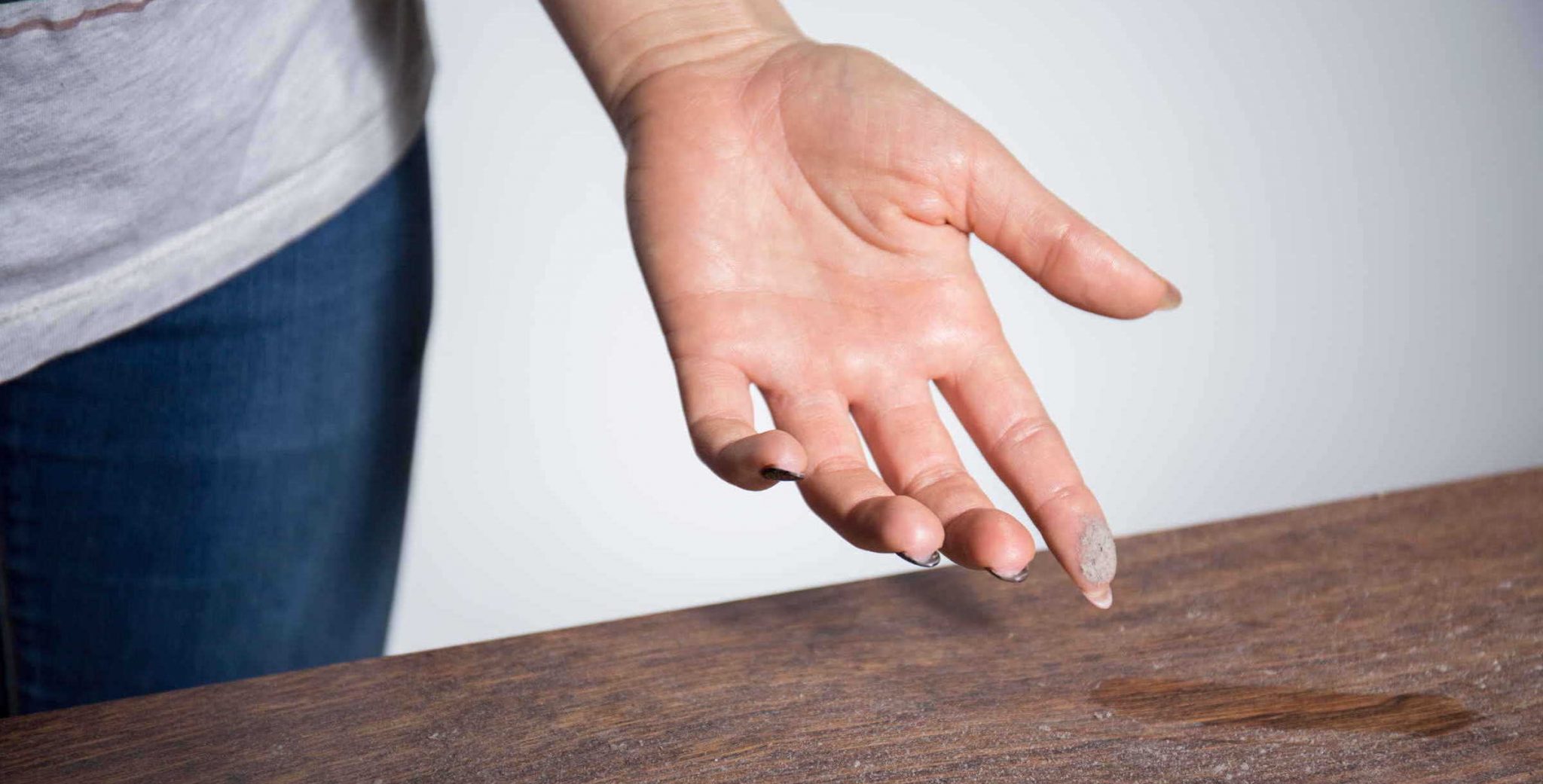Dust. We all have it. And, it seems to reappear out of thin air before we even finish cleaning a particular surface.
So, (1) where’s it come from anyway, (2) what’s the deal with dust mites, and (3) can dust air purifiers really help? Read on for the low down on dust…
Contents
1. Where Does Dust Come From Anyway?
First, it’s helpful to understand where dust comes from, why it makes us feel so lousy, and how air purifiers help remove it from our home. Turns out all the cleaning in the world can’t completely eliminate dust particles and other contaminants from the air in our homes. That’s because dust is constantly being produced – mostly by us when our dead skin cells slough off (I know – gross, right?). Our pets’ shedding and dirt that gets dragged in from the outdoors helps form dust as well.
2. Dust Mites: the Invisible Critters That Can Make Us Feel Sick
Here’s where things really get gross: dust often contains dust mites which is what triggers allergic reactions. These microscopic creatures, which are closely related to spiders and ticks, thrive in house dust. What’s worse is that, like any living creature, they produce feces which many people are allergic to. When we inhale dust particles, dust mites, and dust mite waste for prolonged periods, we can start to feel the allergic reactions as our body responds to the foreign invaders.
3. How Do Air Purifiers Get Rid of Dust?
Air purifiers suck in air along with the contaminants floating it in – including dust and dust mites – run it through a filtration system, and then blow it back out cleansed and fresh smelling.
4. Get Hip About HEPA
You’ve probably seen the term HEPA as it relates to vacuum cleaners. Most air purifiers use what’s called a true HEPA filtration system. HEPA stands for High Efficiency Particulate Air which means the filter has been manufactured, tested, certified, and labeled in accordance with current HEPA filter standards.
A filter can only be HEPA certified if it’s been tested and shown to capture 99.97% of the 0.3-micron (0.000012-inch) particles in the air that pass through the filter. Since most common home dust particles are around 5 microns in size, an air purifier can easily trap them and dust mites.
Parts of the HEPA Filter: Although it can vary by make and model, most HEPA filters commonly found in air purifiers are actually made up of three components:
- PRE-FILTER—this filter traps larger particles including dust and pet hair and is often washable. It’s usually made of a micro-mesh layer that is easy to remove and clean to help extend the life of the other filter parts.
- CARBON FILTER—activated carbon helps absorb odors, which is why so many air purifiers use one. This layer catches larger particles such as dust bunnies and pollens, but its main purpose is to eliminate odors in the air.
- HEPA FILTER—this is the part that does the really dirty work, so to speak. It traps the smallest particles including smoke.
A Word About Ionizing Purifiers: Not all air purifiers rely on HEPA filters, however. Some higher end models use air ionizers to destroy contaminants. The downside of these products is that they also emit ozone as a result, which can be harmful to people that suffer from asthma and other health problems.
If you do want an air purifier for dust mites that uses an ionizer, we recommend choosing one that states it is certified by the California EPA Air Resources Board (CARB). This means it either does not produce ozone at all, or it emits ozone in a very small concentration of less than 0.050 parts per million. Many air purifiers that include an ionizer as part of its filtration system will give you the option of shutting it off, if ozone production is a concern to you.
5. Do I Need To Pay Attention To CADR Ratings?
An air purifier’s CADR (Clean Air Delivery Rate) and coverage area indicate how fast it can clean the air within a room of a particular size. If you have a large living room that needs purifying, you want to make sure your machine has enough grunt to do the job right.
What to Know About CADR Ratings: CADR ratings have been tested and confirmed by the AHAM (Association of Home Appliance Manufacturers). Keep in mind that the CADR rating is for the highest fan setting on the air purifier. If you run the air purifier at lower speeds, it will take longer for the machine to clean/change the air in the room.
You can determine the maximum room size the machine was designed for by multiplying its CADR rating by 1.55. So if an air purifier has a CADR of 145, that means the largest sized room it can efficiently clean is a 225 sq. ft room (145 X 1.55 = 225.)

